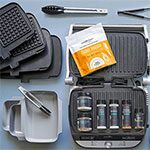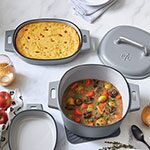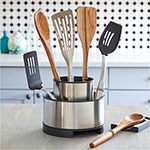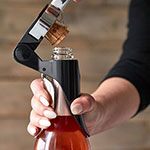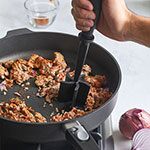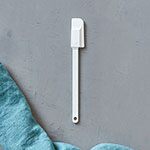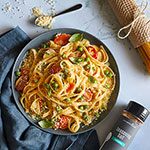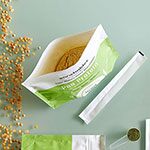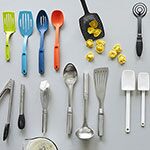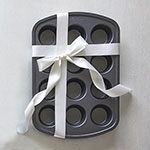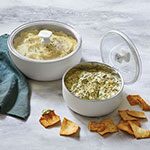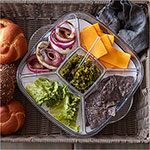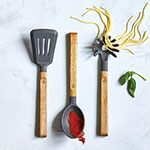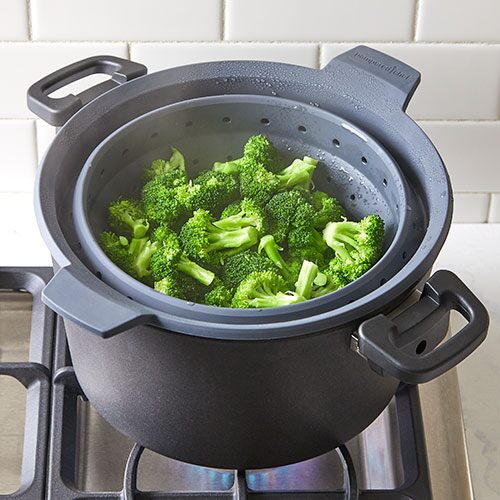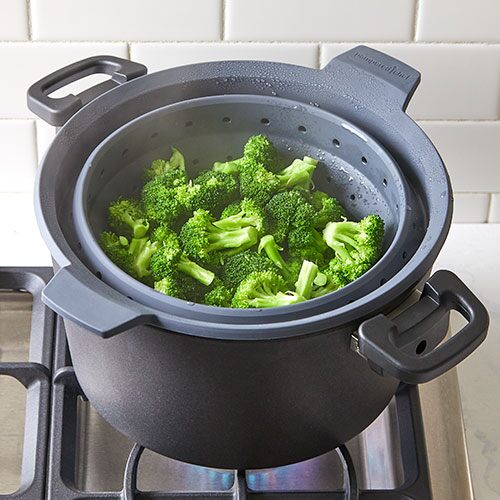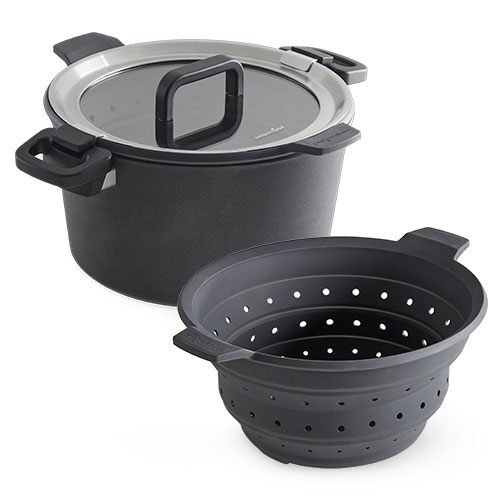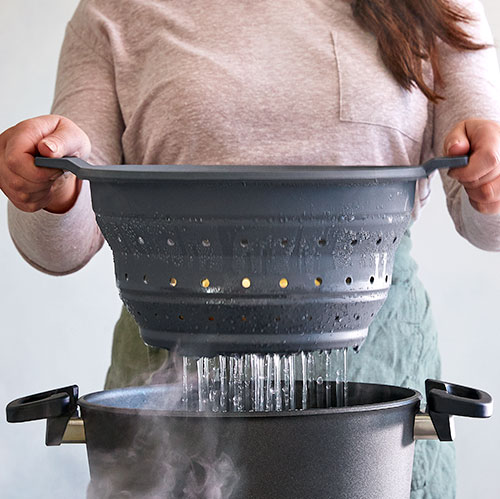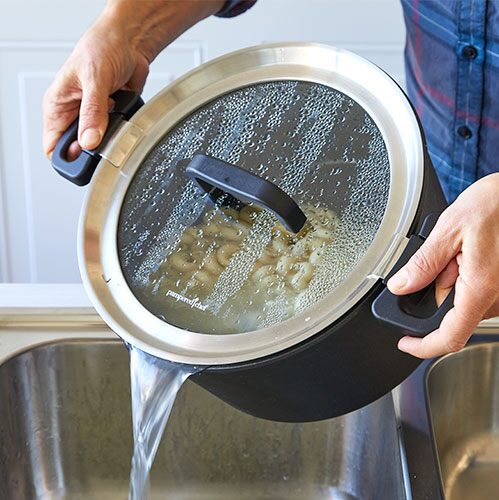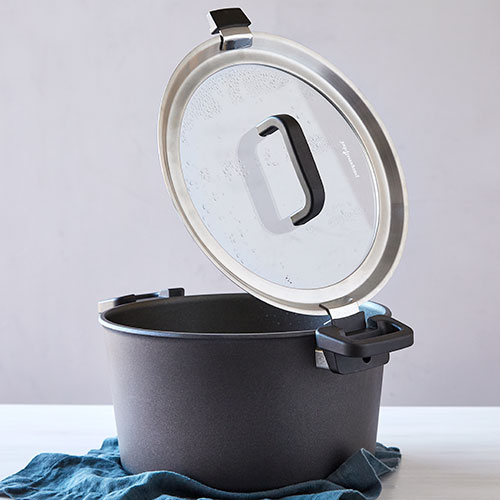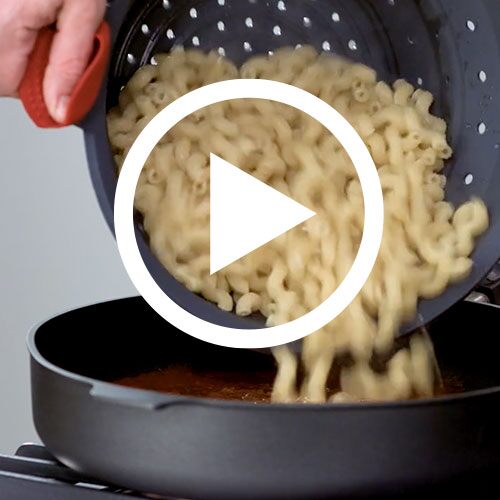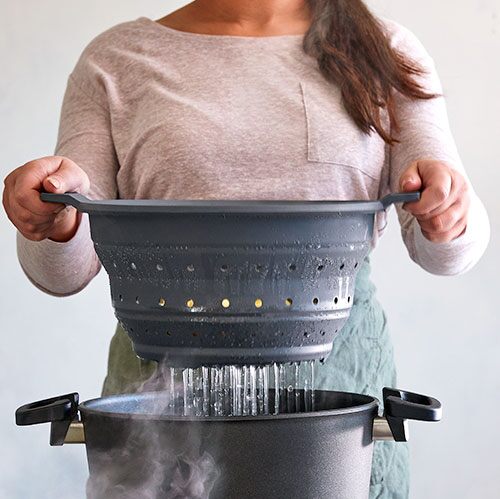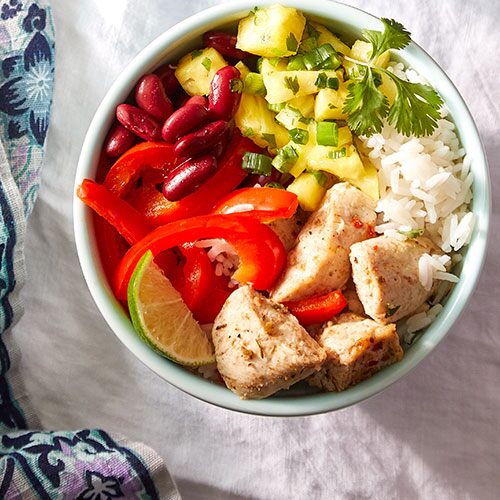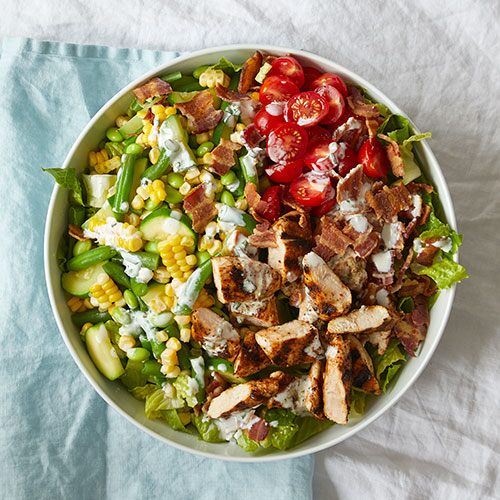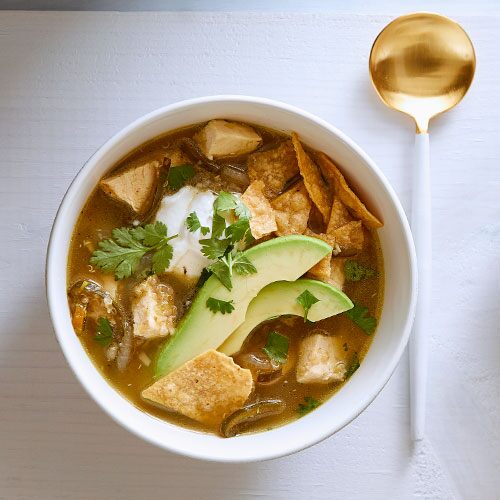Multipot With Collapsible Steamer
The Multipot With Collapsible Steamer is the ultimate one-pot meal maker! It's perfect for pasta, soup, stew, and more. The innovative lid props in the handle so condensation runs back into the pot, instead of all over your stovetop. You can even use the lid as a built-in strainer. The top-of-the-line titanium-reinforced, four-layer nonstick coating is PFOA-free and provides even heat conduction and consistent results every time.
Details
- Includes Multipot, lid, and Silicone Collapsible Steamer & Strainer.
- Multipot:
- 9-qt. capacity.
- Cleanup is easy because it's dishwasher-safe.
- Use your favorite utensils—even metal!
- Designed without rivets, so there's no food buildup or rusting.
- The top-of-the-line, titanium-reinforced, four-layer nonstick coating releases food easily. Plus, it's PFOA-free.
- Heat-safe to 480°F.
- Tempered-glass lid with stainless-steel rim is heat-safe to 400°F.
- Guaranteed for life.
- Silicone Collapsible Steamer & Strainer:
- Use the steamer three ways:
- Fully expanded as a strainer or colander
- Partially collapsed as a steamer
- Fully collapsed as a trivet or boil-over guard
- 11¾" diameter. 6¼" tall.
- Three-year guarantee.
- Use the steamer three ways:
Learn more about our nonstick cookware collection here.
-
Use & Care
Use & Care
Use & Care
See the Silicone Collapsible Steamer & Strainer Use and Care.
PARTS.
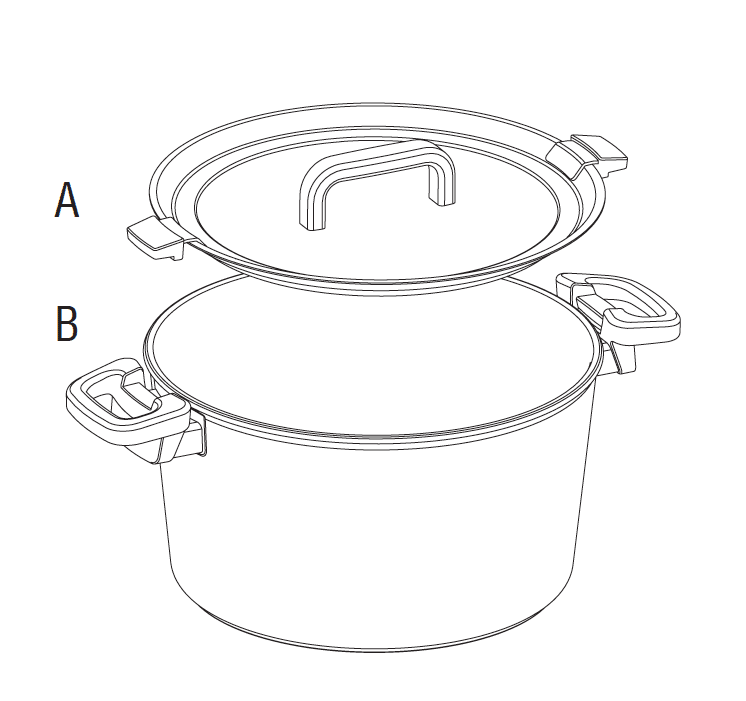
- Lid
- Multipot
CLEANING.

- Wash before using for the first time; dishwasher-safe. The exterior base plate will darken after dishwashing, and a slight gray residue may form. This is normal and will not impact performance of the cookware.
- Thoroughly clean cookware after every use.
- Do not use oven cleaners, steel wool, steel scouring pads, harsh detergents, or detergents containing chlorine bleach.
- To deep clean:
- To remove stubborn spots, soak in hot, soapy water and wash by hand. You can use a nonabrasive sponge or cloth to clean the exterior and interior surfaces.
- For tougher food buildup or occasional deep cleaning, prepare a baking soda paste by mixing ½ cup (125 mL) of baking soda with 3 tbsp (45 mL) of water. Apply to the desired areas and let it stand for 15–20 minutes. Wipe off excess paste, rinse thoroughly, and towel dry.
- To remove mineral buildup, wipe the interior clean with a nonabrasive sponge or a cloth dipped in distilled white vinegar. Rinse and hand wash with hot, soapy water.
- To maintain a clean and shiny lid, periodically clean with a cloth dampened with vinegar or lemon juice. Rinse and dry completely.
USE AND CARE
- Storing: To help reduce scratches on interior and exterior coatings, place paper, soft cloth towels, or cookware protectors between pans when storing.
- To strain: Insert the lid handles over the slots on the pot handles. While holding the lid handles down with both hands, carefully strain water from the pot. See illustration 1.
- To close fully: Offset the lid handles from the pot handles. See illustration 2.
- To use the lid rest: Insert the lid handle into the slot between the wall of the pot and the pot handle. Slightly angle the lid toward the center of pot to help condensation drip back into the pot. See illustration 3.
COOKING
- Stovetop use: Cookware may be used on a glass or ceramic cooktop, electric coil, or gas burner ranges.
- Do not use on induction cooktops. Exterior surfaces of cookware and glass top and ceramic cooking surfaces should be clean and free of food residue before heating. Consult your stove manufacturer’s instructions for more details.
- Select a burner size that matches the diameter of the cookware base. For gas stoves, flames should not extend beyond base of cookware.
- Cookware is intended to be used on low and medium heat settings and medium-high heat for short intervals. Prolonged use at higher heat settings will void the guarantee.
- Low heat: Simmering liquids, warming food, and preparing delicate sauces
- Medium heat: Preheating, sautéing, searing, frying, and stir-frying
- High heat: Boiling and reducing liquids only
- Preheating of pans should not exceed 3–5 minutes.
- Never leave an empty pan with the burner on as it could lead to warping or damage of the nonstick coating, which will void the guarantee.
- Oven use: Cookware is oven-safe to 480°F (250°C). Lids are oven-safe to 400°F (200°C). Detachable handle is NOT oven-safe.
- Broiler use: Never place this product under the broiler. The nonstick coating and handles will be severely damaged, voiding the guarantee.
- Microwave and outdoor grill use: Not microwave- or outdoor grill-safe.
- Nonstick sprays and oils: Do not use nonstick sprays on the cookware as they cause an invisible buildup and impair the nonstick coating performance. Do not overheat oil, butter, or shortening. This will create a sticky residue that will affect the release of the nonstick and result in a reduced life of the coating.
- Utensils: Nylon, silicone, wooden, or metal utensils (with the exception of sharp knives) may be used. Metal utensils may cause some surface scratches on the coating. This is normal and will not affect the performance of the cookware.
- Sliding pans: Avoid sliding or dragging cookware over the surface of your stovetop, especially glass top ranges, as scratches to the cookware are deemed to be normal wear and tear and thus are not covered by the guarantee.
- Lid: When removing a hot lid, lift the lid toward you, allowing the steam to escape away from your body. Always use a heat-resistant oven mitt or pad when removing pans and/or lids from the oven or stovetop.
SAFEGUARDS
- Steam and splatter: Keep children away from the stove while cooking. Be careful around the stove as heat, steam, and splatter can cause burns.
- Unattended cooking: Never allow cookware to boil dry or leave an empty pan on a hot burner as the pan can get extremely hot. This could lead to warping or damage of the nonstick coating, which will void the guarantee.
- Fumes: Do not overheat your nonstick pan as smoke or fumes from burning foods, oils, and the nonstick coating itself can be hazardous to the respiratory system of pet birds.
- Gas flames: Gas flames should not extend up the sides of the pan. This will damage the exterior of the pan and handle, voiding the guarantee.
- Hot handles: Always use a heat-resistant oven mitt or pad when handling hot handles. Use caution when attaching and detaching the handle when inserting or removing the cookware from the oven. If needed, use an oven mitt or grip with the opposite hand to hold the pan in place while attaching or detaching the handle.
- Cooktop surfaces: For use on flat glass or ceramic cooktop surfaces, consult the appliance manufacturer’s instruction manual before using for the first time.
TROUBLESHOOTING
Problem Caused by How to Fix The nonstick coating has scratches.
- Using metal utensils, normal use, etc.
- This is considered normal wear and tear and will not affect the performance of the cookware.
The nonstick coating has browned. - Overheating and/or using improper diameter size on gas or flattop stoves.
- Nonstick coating cannot be restored if browned.
The nonstick coating is peeling. - Overheating and/or using improper diameter size on gas or flattop stoves.
- Nonstick coating cannot be restored if it’s peeling.
There’s exposed metal under the nonstick coating. - Using a knife or sharp utensil on the surface.
- Nonstick coating cannot be restored if metal is exposed.
Sticking/nonstick coating does not release. - Using nonstick spray or overheating oil, butter, or shortening.
- Failure to properly clean after every use.
- Follow deep cleaning directions to remove residues.
There’s white discoloration on the interior. - Mineral buildup that is typical with normal use.
- Follow deep cleaning instructions to remove.
The bottom of the pan is discolored. - Bottom will darken after dishwashing.
- This is considered normal and will not affect the performance of the cookware.
GUARANTEE
- Vessel, Lid: Lifetime guarantee for noncommercial use. Refer to sales receipt or website for details. The guarantee is limited and covers defects in materials and workmanship. The guarantee excludes damage by abuse or misuse (such as lack of or improper cleaning, overheating, use of caustic or other unapproved cleaners or use of nonstick sprays), ordinary wear and tear, or act of God. Product returned is subject to inspection for proper use and care.
- Silicone Collapsible Steamer & Strainer: Three-year guarantee for noncommercial use. Refer to sales receipt or website for details.
Vessel made in Germany, Lid made in China, Handle made in Turkey.
GuaranteeUse & Care
See the Silicone Collapsible Steamer & Strainer Use and Care.
PARTS.

- Lid
- Multipot
CLEANING.

- Wash before using for the first time; dishwasher-safe. The exterior base plate will darken after dishwashing, and a slight gray residue may form. This is normal and will not impact performance of the cookware.
- Thoroughly clean cookware after every use.
- Do not use oven cleaners, steel wool, steel scouring pads, harsh detergents, or detergents containing chlorine bleach.
- To deep clean:
- To remove stubborn spots, soak in hot, soapy water and wash by hand. You can use a nonabrasive sponge or cloth to clean the exterior and interior surfaces.
- For tougher food buildup or occasional deep cleaning, prepare a baking soda paste by mixing ½ cup (125 mL) of baking soda with 3 tbsp (45 mL) of water. Apply to the desired areas and let it stand for 15–20 minutes. Wipe off excess paste, rinse thoroughly, and towel dry.
- To remove mineral buildup, wipe the interior clean with a nonabrasive sponge or a cloth dipped in distilled white vinegar. Rinse and hand wash with hot, soapy water.
- To maintain a clean and shiny lid, periodically clean with a cloth dampened with vinegar or lemon juice. Rinse and dry completely.
USE AND CARE
- Storing: To help reduce scratches on interior and exterior coatings, place paper, soft cloth towels, or cookware protectors between pans when storing.
- To strain: Insert the lid handles over the slots on the pot handles. While holding the lid handles down with both hands, carefully strain water from the pot. See illustration 1.
- To close fully: Offset the lid handles from the pot handles. See illustration 2.
- To use the lid rest: Insert the lid handle into the slot between the wall of the pot and the pot handle. Slightly angle the lid toward the center of pot to help condensation drip back into the pot. See illustration 3.
COOKING
- Stovetop use: Cookware may be used on a glass or ceramic cooktop, electric coil, or gas burner ranges.
- Do not use on induction cooktops. Exterior surfaces of cookware and glass top and ceramic cooking surfaces should be clean and free of food residue before heating. Consult your stove manufacturer’s instructions for more details.
- Select a burner size that matches the diameter of the cookware base. For gas stoves, flames should not extend beyond base of cookware.
- Cookware is intended to be used on low and medium heat settings and medium-high heat for short intervals. Prolonged use at higher heat settings will void the guarantee.
- Low heat: Simmering liquids, warming food, and preparing delicate sauces
- Medium heat: Preheating, sautéing, searing, frying, and stir-frying
- High heat: Boiling and reducing liquids only
- Preheating of pans should not exceed 3–5 minutes.
- Never leave an empty pan with the burner on as it could lead to warping or damage of the nonstick coating, which will void the guarantee.
- Oven use: Cookware is oven-safe to 480°F (250°C). Lids are oven-safe to 400°F (200°C). Detachable handle is NOT oven-safe.
- Broiler use: Never place this product under the broiler. The nonstick coating and handles will be severely damaged, voiding the guarantee.
- Microwave and outdoor grill use: Not microwave- or outdoor grill-safe.
- Nonstick sprays and oils: Do not use nonstick sprays on the cookware as they cause an invisible buildup and impair the nonstick coating performance. Do not overheat oil, butter, or shortening. This will create a sticky residue that will affect the release of the nonstick and result in a reduced life of the coating.
- Utensils: Nylon, silicone, wooden, or metal utensils (with the exception of sharp knives) may be used. Metal utensils may cause some surface scratches on the coating. This is normal and will not affect the performance of the cookware.
- Sliding pans: Avoid sliding or dragging cookware over the surface of your stovetop, especially glass top ranges, as scratches to the cookware are deemed to be normal wear and tear and thus are not covered by the guarantee.
- Lid: When removing a hot lid, lift the lid toward you, allowing the steam to escape away from your body. Always use a heat-resistant oven mitt or pad when removing pans and/or lids from the oven or stovetop.
SAFEGUARDS
- Steam and splatter: Keep children away from the stove while cooking. Be careful around the stove as heat, steam, and splatter can cause burns.
- Unattended cooking: Never allow cookware to boil dry or leave an empty pan on a hot burner as the pan can get extremely hot. This could lead to warping or damage of the nonstick coating, which will void the guarantee.
- Fumes: Do not overheat your nonstick pan as smoke or fumes from burning foods, oils, and the nonstick coating itself can be hazardous to the respiratory system of pet birds.
- Gas flames: Gas flames should not extend up the sides of the pan. This will damage the exterior of the pan and handle, voiding the guarantee.
- Hot handles: Always use a heat-resistant oven mitt or pad when handling hot handles. Use caution when attaching and detaching the handle when inserting or removing the cookware from the oven. If needed, use an oven mitt or grip with the opposite hand to hold the pan in place while attaching or detaching the handle.
- Cooktop surfaces: For use on flat glass or ceramic cooktop surfaces, consult the appliance manufacturer’s instruction manual before using for the first time.
TROUBLESHOOTING
Problem Caused by How to Fix The nonstick coating has scratches.
- Using metal utensils, normal use, etc.
- This is considered normal wear and tear and will not affect the performance of the cookware.
The nonstick coating has browned. - Overheating and/or using improper diameter size on gas or flattop stoves.
- Nonstick coating cannot be restored if browned.
The nonstick coating is peeling. - Overheating and/or using improper diameter size on gas or flattop stoves.
- Nonstick coating cannot be restored if it’s peeling.
There’s exposed metal under the nonstick coating. - Using a knife or sharp utensil on the surface.
- Nonstick coating cannot be restored if metal is exposed.
Sticking/nonstick coating does not release. - Using nonstick spray or overheating oil, butter, or shortening.
- Failure to properly clean after every use.
- Follow deep cleaning directions to remove residues.
There’s white discoloration on the interior. - Mineral buildup that is typical with normal use.
- Follow deep cleaning instructions to remove.
The bottom of the pan is discolored. - Bottom will darken after dishwashing.
- This is considered normal and will not affect the performance of the cookware.
GUARANTEE
- Vessel, Lid: Lifetime guarantee for noncommercial use. Refer to sales receipt or website for details. The guarantee is limited and covers defects in materials and workmanship. The guarantee excludes damage by abuse or misuse (such as lack of or improper cleaning, overheating, use of caustic or other unapproved cleaners or use of nonstick sprays), ordinary wear and tear, or act of God. Product returned is subject to inspection for proper use and care.
- Silicone Collapsible Steamer & Strainer: Three-year guarantee for noncommercial use. Refer to sales receipt or website for details.
Vessel made in Germany, Lid made in China, Handle made in Turkey.
Guarantee


 Canada (en)
Canada (en) Germany (de)
Germany (de) Austria (de)
Austria (de)